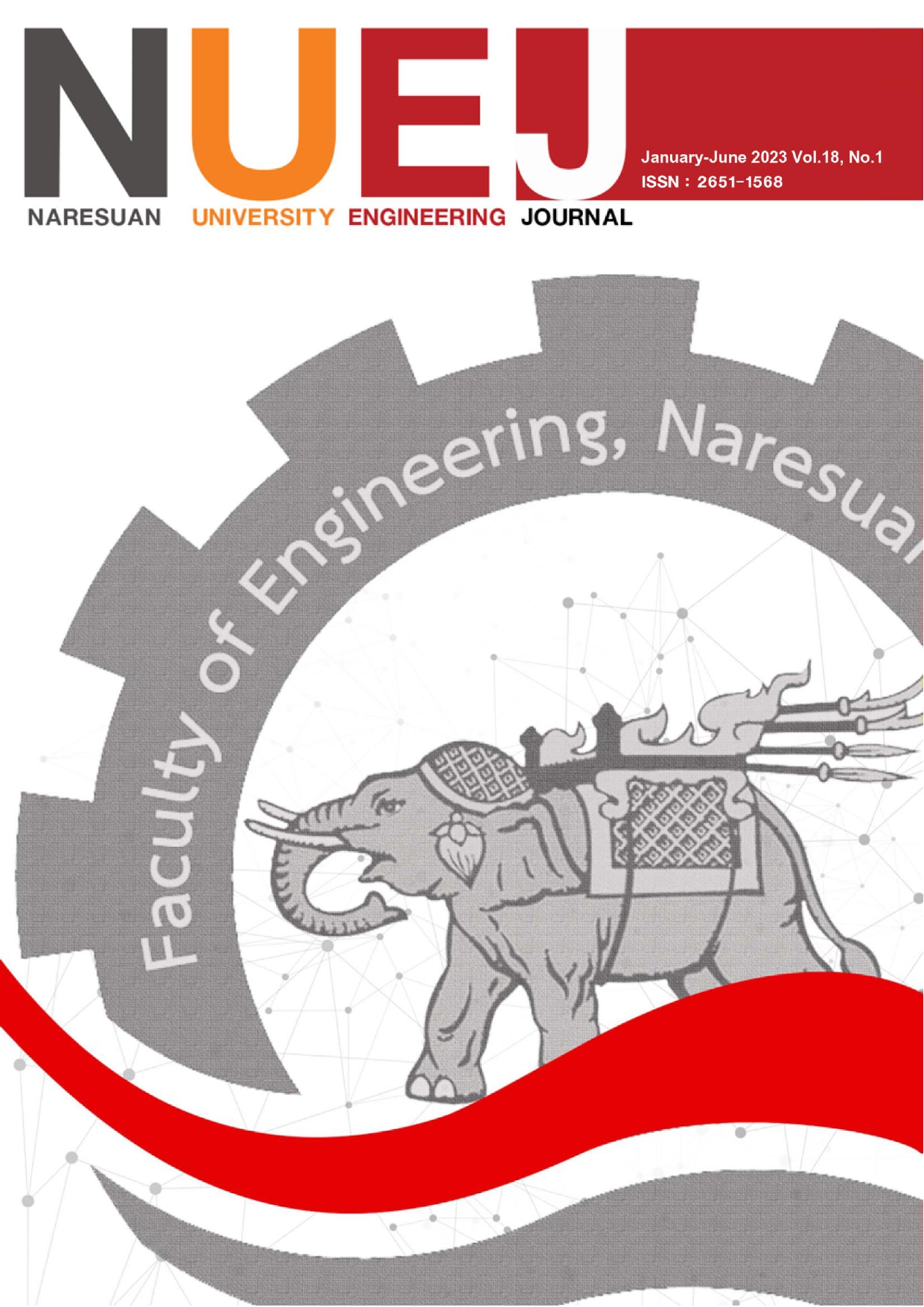Suitable Voltage Determination of Ohmic Heating Process for Household Pork Steak Preparation Machine
Main Article Content
Abstract
This paper presents the procedure to determine the suitable applied voltage in the ohmic heating process for pork steak preparation combined with conventional grilling. The electrical, physical, and chemical properties parameters that are investigated. During the ohmic heating process, not only the temperature rises and duration time for each cooking level examined, but also the ampacity required of the equipment in the process is considered. In the experiment, meat samples with cross-section areas: 42, 43, and 44 inch2 with a thickness of 0.5 inches were tested by an alternating current (AC) voltage source: 20, 25, and 30 V at a frequency of 50 Hz within 300 seconds. The criteria for selecting the suitable voltage were the rate of temperature rise of the meat sample must increase linearly for all 3 sizes of meat before the pre-boiling temperature, the maximum load current did not exceed the copper wire ampacity, and the duration time used between each adjacent stage of meat cooking was chosen to be longer. From the experiment results, the appropriate voltage for the steak cooker's default setting was 20 V for the following reasons: 1) The rates of temperature increase were linearly proportional for all 3 sizes of meat samples as well-done or internal meat temperature reached 71 oC and within 300 seconds. 2) The maximum load current of the applied voltages at AC 20 V was the lowest current (7.43 A). 3) The duration time used between each adjacent stage of meat cooking of AC 20 V was the longest time compared to others. Thus, the steak’s cooking level can be easily managed. After the ohmic heating process, the steaks' physicochemical properties (pH, moisture, drip loss, cooking loss, water holding capacity (WHC), shear force, and color) were evaluated. The steaks did not approach the dangerous toxicity level, and the cooking time was nearly half that of conventional grilling.
Article Details

This work is licensed under a Creative Commons Attribution-NonCommercial-NoDerivatives 4.0 International License.
References
Bozkurt, H., and Icier, F. (2010). Ohmic cooking of ground beef: Effects on quality. Journal of Food Engineering, 96(4), 481–490.
Chen, Y., Llave, Y., Jiao, Y., Okazaki, E., Sakai, N., & Fukuoka, M. (2022). Ohmic tempering using a high frequency ohmic heating and model food of minced tuna based on Alaska pollock surimi – Evaluation of electrical conductivities. Innovative Food Science & Emerging Technologies, 76, Paper no.102940.
Cross, H. R., Durland, P. R., Seideman, S. C. (1986). Sensory qualities of meat. In: Bechtel PJ, editor. Muscle as food. New York: Academic Press; 1986. 297–320.
Damez, J. L., & Clerjon, S. (2013). Quantifying and predicting meat and meat products quality attributes using electromagnetic waves: an overview. Meat Science, 95(4), 879-896.
Jun, S., Sastry, S., & Samaranayake, C. P. (2007). Migration of electrode components during ohmic heating of foods in retort pouches. Innovative Food Science and Emerging Technologies, 8(2), 237–243.
Jung, A. H., Hwang, J. H., Jun, S., & Park, S. H. (2022). Application of ohmic cooking to produce a soy protein-based meat analogue. LWT-Food Science and Technology, 160, Paper no.113271.
Mahapatra, A. K., Jones, B. L., Nguyen, C. N., & Kannan, G. (2007). Experimental Determination of the Electrical Resistivity of Beef. American Society of Agricultural and Biological Engineers Annual International Meeting, Paper no. 076031.
Marcotte, M., & Trigui, M. (2000). Effect of Salt and Citric Acid on Electrical Conductivity and Ohmic Heating of Viscous Liquids. Food Research and Development Centre Agriculture and Agri-Food, Paper no. J2S 8E3.
Muthukumarappan, K., Marella, C., & Sunkesula, V. (2019). Handbook of Farm, Dairy and Food Machinery Engineering (3rd ed.). Academic Press. https://doi.org/10.1016/C2017-0-01578-1
Richa, R., Shahi, N. C., Singh, A., Lohani, U. C., More, P. K., Kumar, A., & Bhattacharya, T.K. (2017). Ohmic Heating Technology and Its Application in Meaty Food: A Review. Advances in Research, 10(4), Paper no. AIR.33799.
Runowska, G. C., Lyczynski, A., Pospiech, E., Podsiadla, M. K., Wojtczak, J., Rzosinska, E., Mikolajczak, B., Grzes, B., Iwabska, E., Krzecio, E., Sieczkowska, H., & Antosik, K. (2010). Electrical Conductivity as an Indicator of Pork Meat Quality. Journal Central European Agriculture, 11(1), 105-112.
Shirsat, N., Lyng, J. G., Brunton, N. P., & McKenna, B. (2004). Conductivities and Ohmic Heating of Meat Emulsion Batters. Journal of Muscle Food, 15, 121-137.
Shirsat, N., Lyng, J. G., Brunton, N. P., & McKenna, B. (2004). Ohmic processing: electrical conductivities of pork cuts. Meat Science, 67, 507–514.
Sriruwat, S., Rugchati, O., & Wattanawongpitak S. (2019). The Study of Temperature Variation within Porcine Meat Due to Low Voltage Direct Current under Ohmic Heating Process. The Electrical Engineering Conference (EECON), 42(2), 553-556.
Sriruwat, S., Rugchati, O., & Wattanawongpitak S. (2020). Analysis of Temperature Variation within Porcine Meat Due to Alternating Current under Ohmic Heating Process. The Electrical Engineering Conference (EECON), 43, 615-618.
Wang, R., & Faris, M. M. (2015). Corrosion and health aspects in ohmic cooking of beef meat patties. Journal of Food Engineering, 146, 17-22.
Yildiz-Turp, G., Sengun, I. Y., Kendirci, P., & Icier, F. (2013). Effect of Ohmic Treatment on Quality Characteristic of Meat: A review. Meat Science, 93, 441-448.
Zell, M., Lyng, J. G., Cronin, D. A., & Morgan, D. J. (2010). Ohmic cooking of whole beef muscle Evaluation of the impact of a novel rapid ohmic cooking method on product quality. Meat Science, 86, 258–263.


